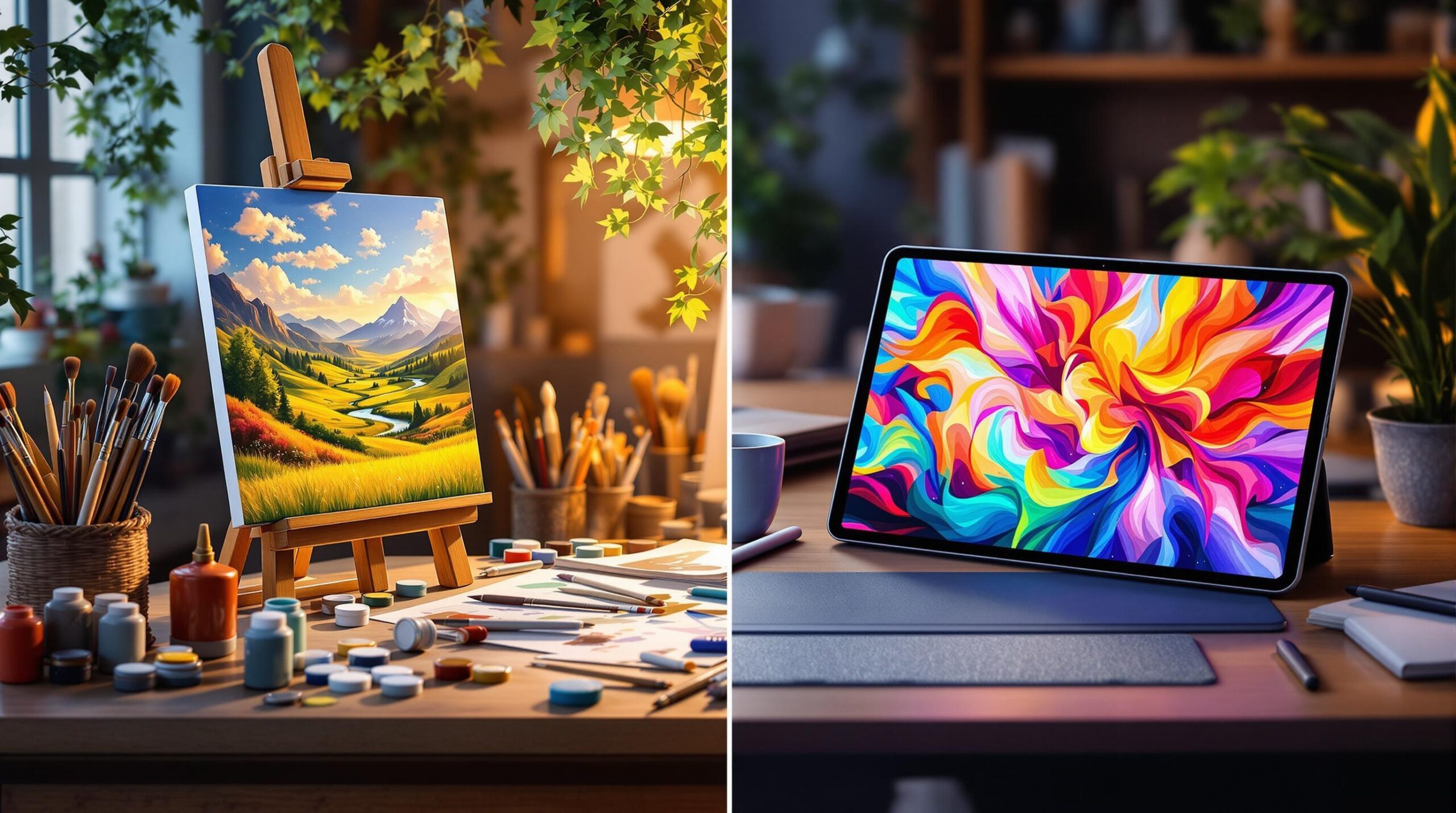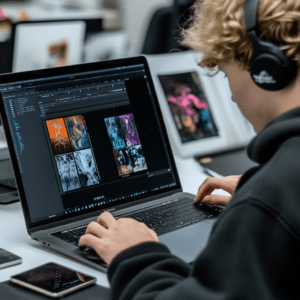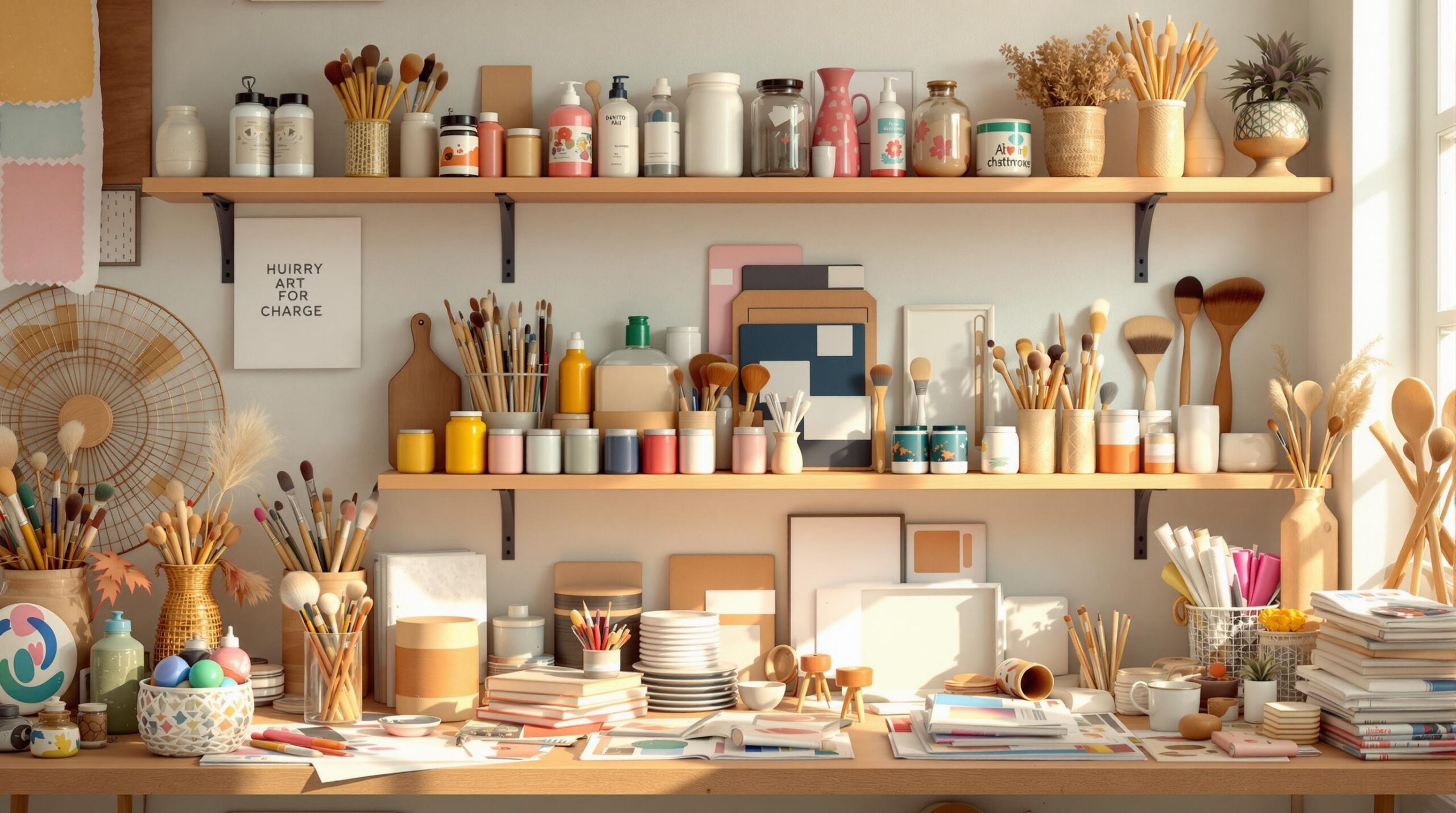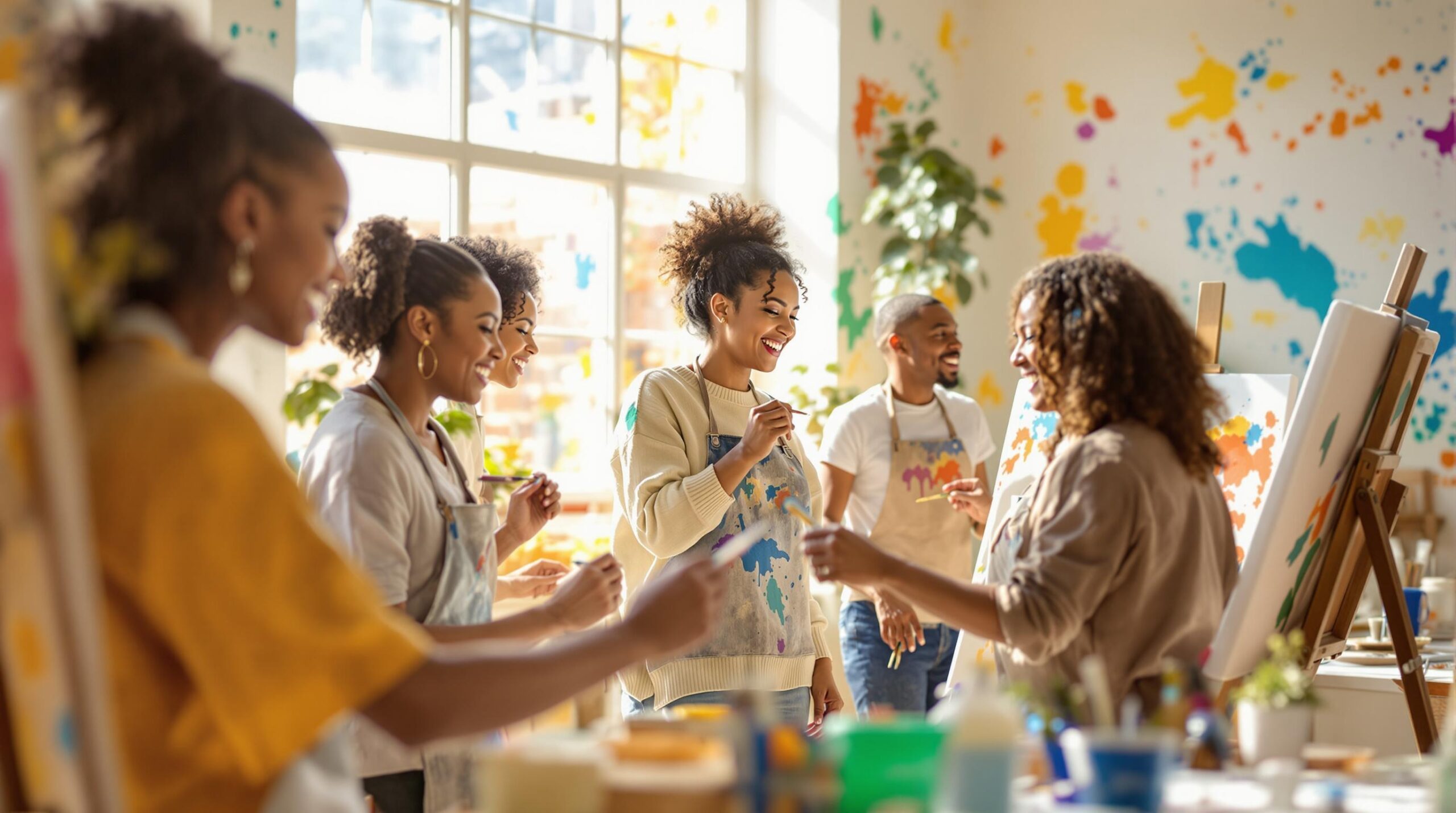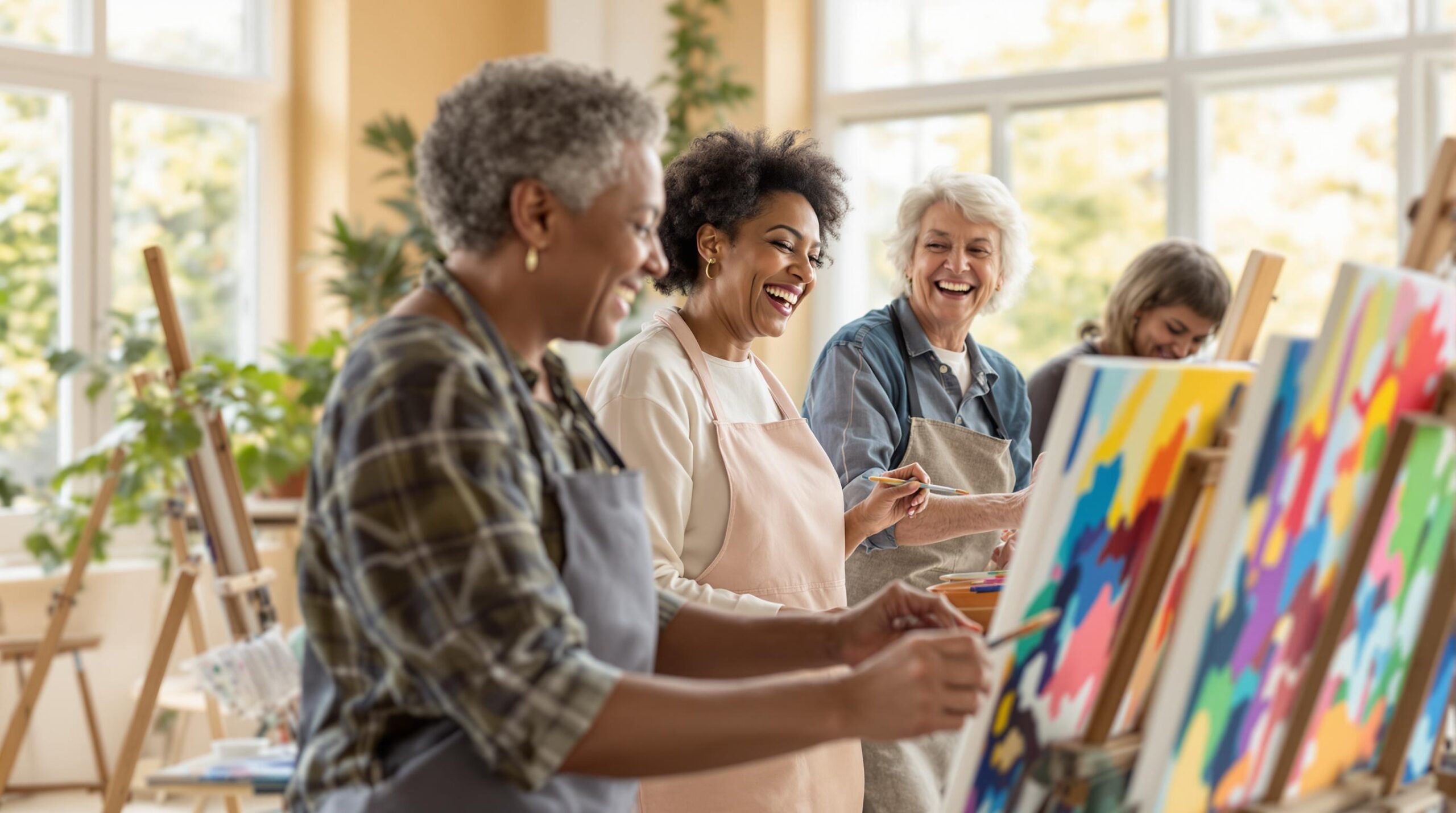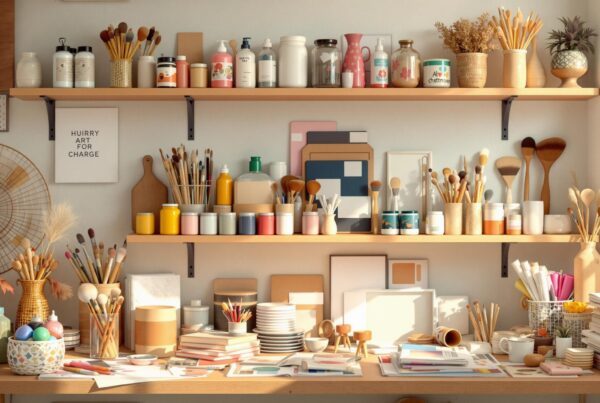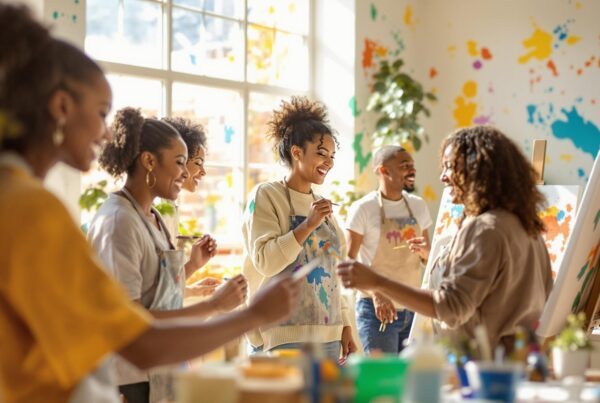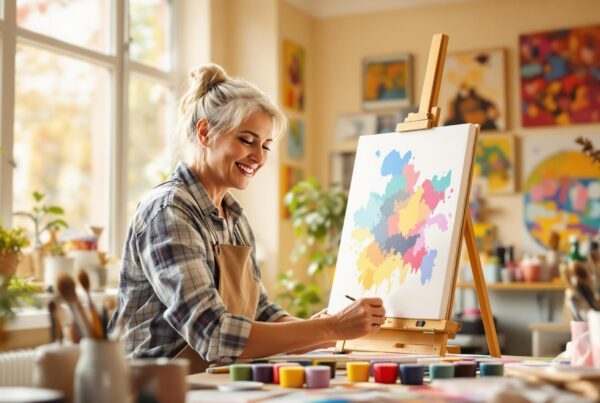Choosing between digital and traditional art? Here’s what you need to know:
- Digital Art: Uses tools like Photoshop and Procreate. Offers faster workflows, cost efficiency, and easy sharing. Great for experimentation and precise edits.
- Traditional Art: Utilizes physical materials like paint and clay. Provides a tactile, hands-on experience with unique, one-of-a-kind results.
Quick Comparison:
| Aspect | Digital Art | Traditional Art |
|---|---|---|
| Tools | Software, tablets | Paint, canvas, brushes |
| Workflow | Flexible, undo options | Permanent marks, careful planning |
| Costs | High initial, low ongoing | Continuous material expenses |
| Sharing | Instant online | Physical transportation |
| Uniqueness | Identical copies possible | Every piece is unique |
Both mediums have strengths and challenges. Many artists combine them to maximize their creative potential. Read on to explore tools, workflows, costs, and more.
Traditional Art vs. Digital Art – Which is BEST?
1. Overview of Digital Art
Digital art has transformed how artists create, blending creativity with technology. It opens up possibilities that traditional methods simply can’t match. Here’s a closer look at what makes digital art stand out and why it’s gaining traction among creators.
Tools and Software for Digital Art
Digital artists rely on a mix of hardware and software to bring their ideas to life. Industry leaders like Adobe Photoshop and Corel Painter dominate the space, while free options like Krita and GIMP are excellent for those starting out. Mobile apps, such as Procreate and Sketchbook, make creating on the go easier than ever.
| Category | Examples |
|---|---|
| Professional Tools | Adobe Photoshop, Corel Painter |
| Free Alternatives | Krita, GIMP |
| Mobile Options | Procreate, Sketchbook |
Techniques in Digital Art
Artists use a range of methods, including digital painting, vector-based art, 3D modeling, and photo manipulation. These techniques allow for endless experimentation and creativity.
Why Choose Digital?
Creating digitally comes with some clear perks [1][3]:
- Faster Workflow: Features like layers, undo options, and instant color changes save time.
- Lower Costs: No need to repeatedly buy physical supplies.
- Instant Sharing: Easily distribute your work online.
- Flexible Formats: Export in various formats for different needs.
- Experimentation Without Risk: Try new styles without fear of wasting materials.
- Color Accuracy: Tools like RGB (for screens) and CMYK (for printing) help maintain consistent colors.
Learning and Connecting with Others
Online tutorials, forums, and social media groups make it easy to improve your skills and connect with other artists. These platforms are a hub for advice, feedback, and inspiration [2].
New Frontiers in Digital Art
Technologies like AI, virtual reality (VR), and augmented reality (AR) are pushing the boundaries of digital art. They allow for immersive, interactive creations that were unimaginable just a few years ago [2][3].
While digital art offers unmatched flexibility and innovation, traditional art continues to hold its own with its enduring charm and tactile appeal. Both forms have their place in the art world, offering creators different ways to express themselves.
sbb-itb-7cb3038
2. Overview of Traditional Art
Traditional art connects the artist and their work through physical mediums, offering hands-on experiences that differ greatly from digital approaches.
Tools and Materials
Creating traditional art involves physical tools that provide a tactile connection:
| Category | Tools | Purpose |
|---|---|---|
| Drawing | Pencils, charcoal | Line work and shading |
| Painting | Paints, brushes | Applying color and texture |
| Sculpting | Clay, carving tools | Shaping three-dimensional art |
| Printmaking | Printing presses | Producing multiple originals |
Techniques and Skill Development
Traditional art demands practice and mastery of core skills like brush control and color mixing. These techniques, developed without digital shortcuts, deepen an artist’s understanding of materials and artistic principles [1][4].
One-of-a-Kind Creations
A hallmark of traditional art is its originality. Each piece is truly unique, with details and textures that can’t be perfectly reproduced. This individuality adds both artistic and market value [1].
Learning and Community Engagement
Traditional art fosters learning and collaboration through:
- Workshops and studio classes: Hands-on instruction from experienced artists.
- Museum visits: Observing masterworks up close.
- Local studio spaces: Opportunities for practice and interaction with other artists.
Blending Old and New
Some artists now combine traditional methods with digital tools, creating hybrid works that merge the best of both worlds [4].
Practical Challenges
Working in traditional mediums comes with logistical considerations:
- The need for dedicated space to create and store art.
- Regular expenses for high-quality materials.
- Challenges with transporting and displaying finished pieces.
Despite the rise of digital art, traditional methods remain popular. According to the National Endowment for the Arts, 2.1% of U.S. adults engage in painting or drawing weekly [5], showing that these timeless practices continue to resonate with many creators.
Traditional art’s physical nature offers a rich, hands-on experience, but comparing it with digital art highlights the diverse ways artists can express themselves today.
Strengths and Weaknesses of Each Medium
Understanding how digital and traditional art differ can help artists choose the right tools for their creative projects. Here’s a closer look at how these two mediums stack up in key areas.
Core Differences
Digital and traditional art shine in their own ways, each offering unique features that make them better suited for specific goals.
| Aspect | Digital Art | Traditional Art |
|---|---|---|
| Creation Process | Uses layers and tools for easy adjustments | Marks are permanent, requiring careful planning |
| Distribution | Instant sharing and duplication | Relies on physical transport |
| Uniqueness | Can produce identical copies | Every piece is truly one of a kind |
| Texture & Feel | Interaction through screens | Hands-on experience with physical materials |
These differences set the stage for understanding the specific benefits of each medium.
Why Choose Digital Art?
Digital art provides unmatched freedom to experiment. Artists can test ideas without fear of ruining their work, make quick changes, and refine their creations easily [1][3]. Features like layers and filters make it possible to achieve polished results that might take much longer with traditional methods.
What Makes Traditional Art Special?
Traditional art stands out for its tactile, hands-on nature. The physical connection with materials adds depth and character that digital tools can’t replicate [1][4]. Textures and imperfections often become part of the artwork’s charm.
Practical Factors to Consider
Digital art is space-efficient and allows endless revisions. While the initial costs for software and hardware can be high, ongoing expenses are minimal. On the other hand, traditional art demands more storage space, continuous investment in supplies, and careful planning, but it results in one-of-a-kind creations.
Combining Both Mediums
By blending traditional and digital techniques, artists can enjoy the strengths of both worlds [2][4]. This hybrid approach opens up new possibilities, letting creators push boundaries while addressing the limitations of each medium.
Ultimately, the decision between digital and traditional art comes down to personal preferences, artistic goals, and practical needs. Both mediums continue to grow, offering artists exciting ways to bring their visions to life.
Final Thoughts
The discussion around digital and traditional art isn’t about which is better – it’s about finding the right medium to bring your artistic vision to life. Both approaches continue to grow, offering distinct ways to create and express.
Digital tools like Krita and Photoshop provide unmatched convenience, enabling endless revisions and streamlined workflows [3]. Plus, the ability to experiment without wasting materials makes digital art especially appealing for those who prioritize precision and efficiency.
On the other hand, traditional art offers a hands-on connection that’s hard to replicate. While some digital tools aim to imitate traditional techniques, the physicality of working with tangible materials creates an experience that technology can’t fully replace.
Here’s a quick comparison to help you weigh the options:
| Consideration | Digital Art | Traditional Art |
|---|---|---|
| Practical Challenges | Learning software, technical skills | Physical techniques, storage issues |
| Creative Process | Endless edits, multiple layers | Irreversible marks, tactile feel |
| Distribution | Instant online sharing | Physical transportation |
Today’s creative world embraces both mediums. Many artists successfully use both, selecting the best tool for each project. By doing so, they take advantage of each medium’s strengths while working around their limitations.


